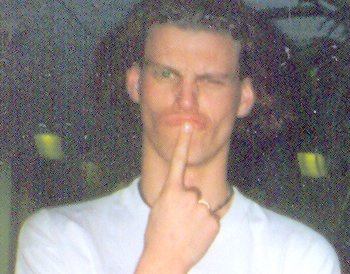Desperation

John 5 - Part 3
John then tells us that "some time later, Jesus went up to Jerusalem." While he was there he goes to a religious landmark. Both Pagans and Jews recognized the Pool of Bethesda as a place of healing. At one point it was dedicated to a pagan healing god, Asclepius (Wright. John for Everybody. Pt. 1. p. 55). The Pool itself was "surrounded by five [luxurious] covered colonnades." So we get the picture of a beautiful resort like place of healing and joy, right?
Well, John goes on to say, "Here a great number of disabled people used to lie--the blind, the lame, the paralyzed." This is a picture of contrast: beautiful place, broken people. John is showing us a unique scene of desperation. So why are all these people hanging around this pool? Well there is a rumor that from time to time an angel would stir up the water, and the first person in would be healed.
Lest we think this is a good thing, imagine what it might look like to see six dozen "blind," "lame," "paralyzed" people pushing each other aside and bounding into a pool all at once? Can you imagine the chaos that would follow as each invalid flopped into the water? Perhaps there was someone who was healed, celebrating their wellness. But imagine the other fifty-plus infirmed left to tred water and try and get back out. Imagine the awkward limbs and scrabbling of the crippled. Imagine the sobbing of those who didn't get the prize. Some perhaps drowning. Many spitting out profanities at their lot and their inability to be first. Imagine. It is a tragic picture at which a devil might smile.
Enter Jesus.
Jesus learns that one man had been sitting at the pool 38 years in his condition. Seeing him there, he asks simply, "Do you want to get well?" It is one of the more intriguing things that Jesus says in the Gospels.
"Do you want to get well?"
It is a sign. The writer again wants us to think back to the stories of Yahweh. Often the God of the Old Testament does not do miracles for the sake of miracles. He acts in order to point out who is and who is not God.
We might think of Elijah confronting the prophets of Bal, or Shadrach, Mashach, and Abednego being saved in the fire. My favorite is the plagues that fall on Egypt when Moses demands the release of the Hebrew slaves. Each plague that Yahweh brings on Egypt targets an Egyptian God. The first is the plague of blood. It targets the Nile and its associated god. Then one after another Yahweh knocks out the main gods of Egypt, climaxing with the plague of darkness which assualts Ra (the Sun God), and the plague of the first born, which targets the pharaoh himself. God on earth. His son--the future god--dies.
In this scene, Jesus strides into a temple to confront gods who have no desire to heal, but only to mock the broken. Jesus steps into the courts of the pagan gods and shows that he is the one who truly possess the power to restore. Again, this is just a sign, just like the healing of the official's son. Just like the five story TV. But what are these signs pointing to?

0 Comments:
Post a Comment
<< Home